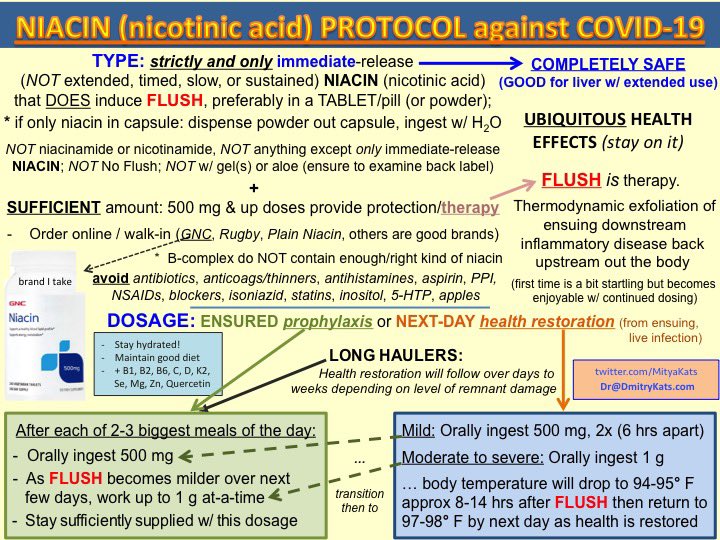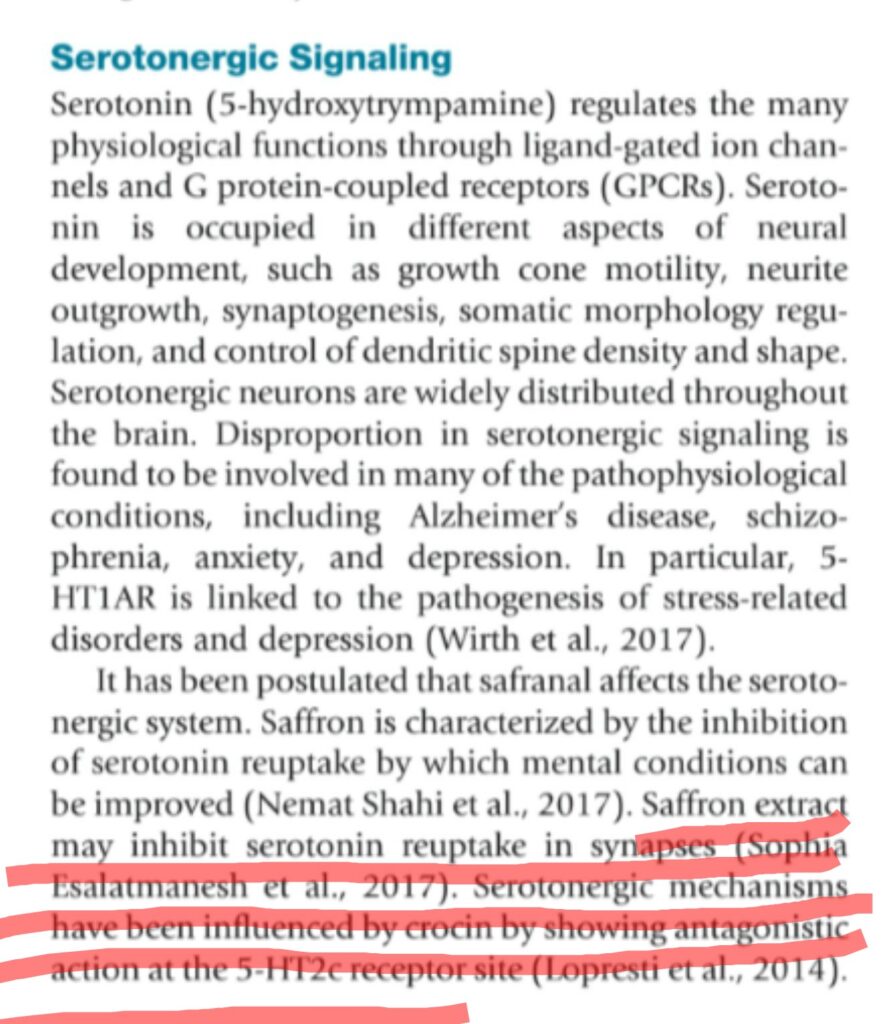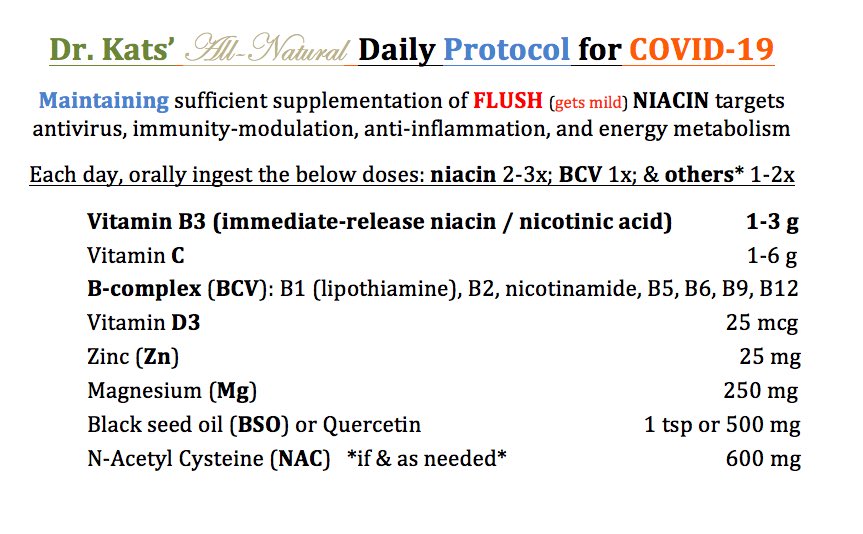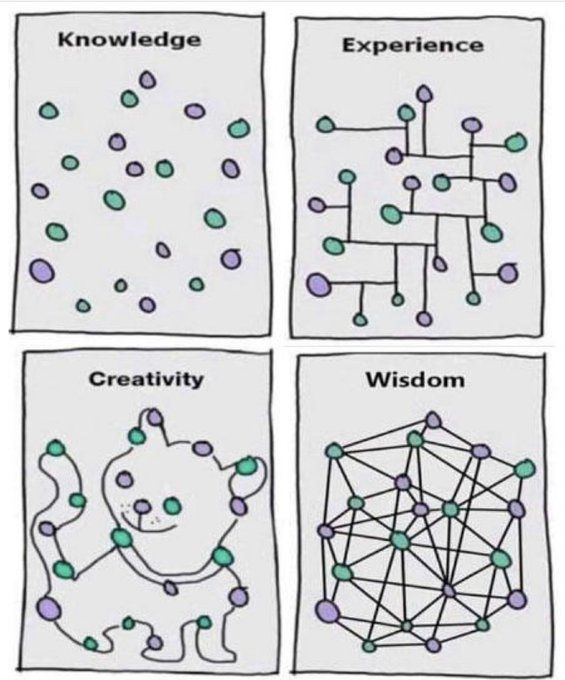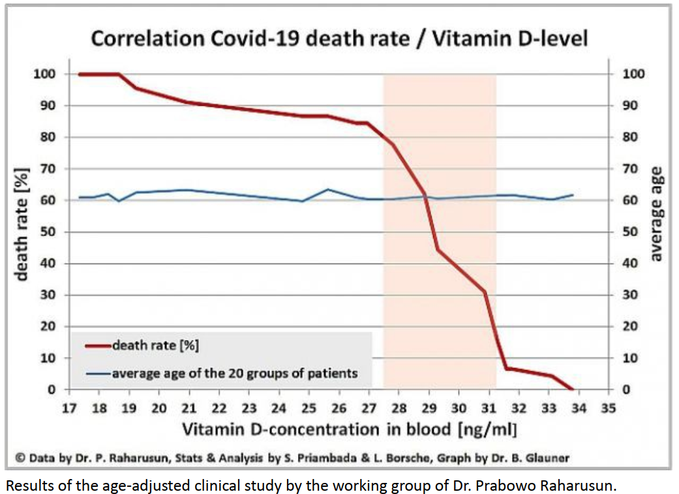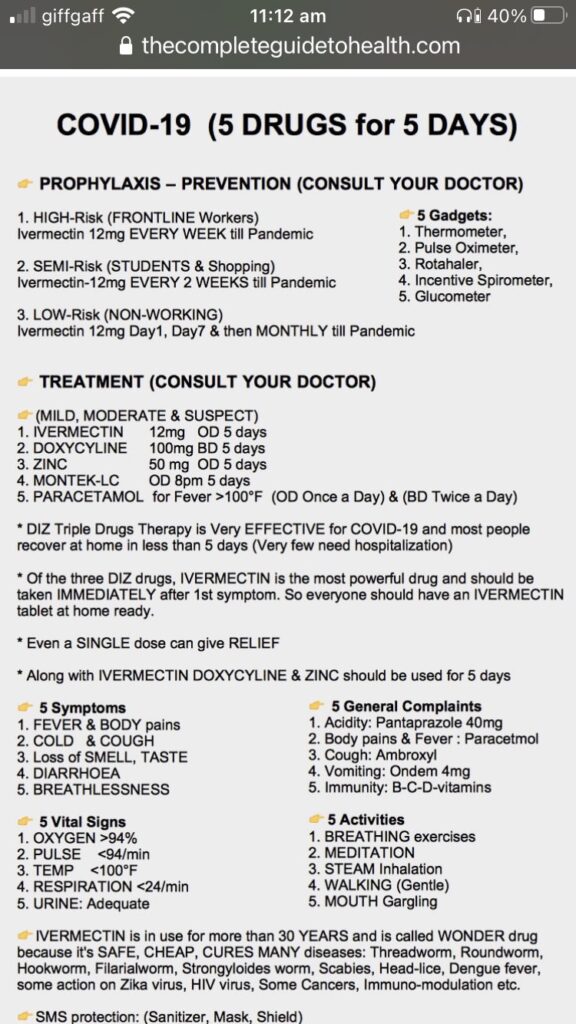NLRP3 Inflammasomes are complex units that are built within cells in response to signals from the innate immune system called cytokines. The inflammasomes release even more cytokines that lead to death of the cell by pyroptosis – since the cell is assumed to be infected and would then be in need of removal from the body. When our cells are in trouble from infection, cancerous changes, or simply aging, they add surface marker proteins that signal to the immune system – ‘trouble here – my time is up, remove me please, for the purpose of the greater good‘. In allergies or autoimmune antibody reactions – the trouble signals are actively calling for the creation of NLRP3 Inflammasomes, but there isn’t really trouble in the cell. If an NLRP3 Inflammasome had been constructed though, the cell will still be killed by pyroptosis – it was signaled for and the chemicals lined up, so to speak, and did their job. (He, et al, 2015)(Iorga and Dara, 2019)(4, 5)
The inflammatory cytokines also cause other symptoms that might help remove a pathogen if sick, but during allergy season, the symptoms may just be emptying the tissue box. NLRP3 Inflammasomes may also be involved in allergies developing – sensitivities being created in the first place. (Xiao, Xu, Su, 2018) (1) The risk of allergy sensitivities or autoimmune antibodies being created would be worse for people with low vitamin D levels or low magnesium. Magnesium is needed in the metabolism of vitamin D.
The SARS-CoV-2 virus spike protein, the E protein section, causes activation of NLRP3 Inflammasome creation, and resulting increase in inflammation can also signal further creation of them:
“The IC activity of E protein [168] as well as those of the other accessory viroporins, 3a and 8a [160], activate the NLRP3 inflammasome by effluxing Ca2+ from the lumen of the ER/ERGIC/Golgi, altering the homeostatic levels of cytosolic Ca2+ [168,180] and resulting in upregulation and secretion of pro-inflammatory TNF-α, IL-1β, IL-6 and IL-18 [160,181]. ER stress [182] and ROS production [183] are also activators of the NLRP3 inflammasome, and due to E protein’s regulation of ER stress they may also activate NLRP3 through an alternative mechanism.” (14)
NLRP3 Inflammasomes are little killing machines that we need when a cell is infected, but which become very damaging if they are being created in response to an allergy or autoimmune type of reaction. Immunomodulating phytonutrients can help the body by rebalancing an over-active or under-active immune response making them generally safe for use. For more information about immunomodulators see: Artemisinin, arteannuin-B, sgp130Fc and COVID-19.
Who is most at risk for an immune reaction? People low in vitamin D, zinc, selenium, B vitamins, and others.
Cells from people who had been sick with COVID-19 reacted to exposure to the SARS-CoV-2 spike protein and inflammasome production occurred. Cells from people who had not been pre-exposed to SARS-CoV-2 did not react to cause inflammasome creation:
“Here we show that the SARS-CoV-2 spike protein (S-protein) primes inflammasome formation and release of mature interleukin-1β (IL-1β) in macrophages derived from COVID-19 patients but not in macrophages from healthy SARS-CoV-2 naïve individuals.” (Theobald, et al, 2021)(2)
Which suggests that an allergy like sensitization to the S-protein occurred.
Inflammasome & Pyroptosis, Definitions from research articles:
- “Inflammasome is an intracellular signaling complex of the innate immune system. Activation of inflammasomes promotes the secretion of interleukin 1β (IL-1β) and IL-18 and triggers pyroptosis.” (4)
- “NLRP3 (NOD-, LRR- and pyrin domain-containing protein 3) is an intracellular sensor that detects a broad range of microbial motifs, endogenous danger signals and environmental irritants, resulting in the formation and activation of the NLRP3 inflammasome. Assembly of the NLRP3 inflammasome leads to caspase 1-dependent release of the pro-inflammatory cytokines IL-1β and IL-18, as well as to gasdermin D-mediated pyroptotic cell death.” (Swanson, Deng, Ting, 2019) (3)
- “In response to allergens or allergen/damage-associated molecular signals, NLRP3 changes its conformation to allow the assembly of the NLRP3 inflammasome complex and activates caspase-1, which is an evolutionarily conserved enzyme that proteolytically cleaves other proteins, such as the precursors of the inflammatory cytokines IL-1β and IL-18. Subsequently, active caspase-1 cleaves pro-IL-1 and pro-IL-18. Recently, accumulating human and mouse experimental evidence has demonstrated that the NLRP3 inflammasome, IL-1β, and IL-18 are critically involved in the development of allergic diseases.” (Xiao, Xu, Su, 2018) (1)
- “Pyroptosis (“pyro” Greek for fire and “ptosis,” falling) is a highly inflammatory mode of regulated cell death which has evolved as a way of removing intracellular pathogens and has a distinct morphology which depends on the formation of plasma membrane pores resulting in cell explosion. Thus, pyroptosis is related to innate immunity activation, but is different from other forms of cell death in that it manifests with a very specific molecular signature.” (5)
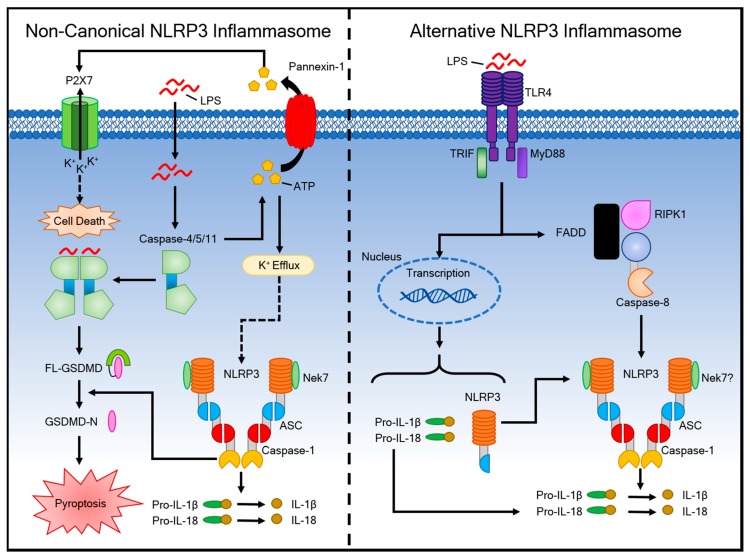
“A Two-Signal Model for NLRP3 Inflammasome Activation. The priming signal (signal 1, left) is provided by microbial components or endogenous cytokines, leading to the activation of the transcription factor NF-κB and subsequent upregulation of NLRP3 and pro-interleukin-1β (pro-IL-1β). Caspase-8 and FAS-mediated death domain protein (FADD), and NOD1/2 are involved in the priming step by regulating the NF-κB pathway. NLRP3 undergoes post-translational modifications that license its activation. The activation signal (signal 2, right) is provided by a variety of stimuli including extracellular ATP, pore-forming toxins, RNA viruses, and particulate matter. Multiple molecular or cellular events, including ionic flux, mitochondrial dysfunction and reactive oxygen species (ROS) generation, and lysosomal damage, have been shown to activate the NLRP3 inflammasome. BRCC3, BRCA1/BRCA2-containing complex subunit 3; IL-1R, IL-1β receptor; JNK1, JUN N-terminal kinase 1; PKD, protein kinase D; TLR, toll-like receptor; TNFR, tumor necrosis factor receptor.” (Kelley, et al, 2019) (8) *Many things can cause an inflammatory response that leads to NLRP3 Inflammasome formation – not just the spike protein. Extracellular ATP should not be present outside of cells and might indicate a dead cell that burst open in an uncontrolled way, as would happen if a viral replication cycle was complete and the virus were leaving the infected cell, and the body would need to remove the cellular debris – because some of it can be damaging, like the ATP is when in the wrong place.
Allergies and autoimmune antibodies are more likely to occur during an immune challenge, in any case, especially if vitamin D deficient.
The spike protein seems to trigger allergies (and autoimmune antibodies – different link), however so can other viral infections or vaccines. When the immune system is really busy responding to cytokines and the surface marker signals or pathogen or damage related debris (PAMPs and DAMPs), then it is also more likely to make mistakes.
Surface marker proteins for normal self proteins may be mismarked as foreign and autoimmune antibodies result, and memory cells for them so the sensitivity will remain even if the initial antibody load is reduced. Or bits of normal cellular debris may cause more damage related signals and the responding immune cells create reactive autoimmune antibodies instead of Tolerant ones that would recognize the debris chemical as a ‘self’ protein. Non-Neutralizing antibodies occur when the immune cells react to a foreign protein as if it is an self surface marker protein (ADE reaction after a vaccine or infection) and future exposure to the pathogen will result in no immune response. or bit of cellular debris is one of the pathogen or damage related signals and creates reactive antibodies instead of Tolerant ones that would accept it as a ‘self’ protein.
“To this point, our data suggest that the S-protein functions as a primer antigen selectively initiating cytokine release dependent on previous SARS-CoV-2 exposure. In contrast to an antigen- and pathogen-specific activation of the adaptive immune response, triggers of innate immune signaling are known to be non-specific. The transcriptomic signatures identified in S-protein stimulated and unstimulated COVID-19 patient-derived macrophages described above have also been detected in other infectious disease backgrounds or after exposure to pathogen-specific molecular patterns or vaccines. Upregulation of S100A8, S100A9, and S100A12, for example, has been linked to innate immune memory after vaccination with Mycobacterium bovis-BCG (Cirovic et al, 2020). A range of pathogens and vaccines trigger upregulation of the inflammation-associated microRNAs mir-155, 221, and 222 (Furci et al, 2013; Wang et al, 2014).” (Theobald, et al, 2021) (2)
Addition 2/16/2022: Pomegranate peel extract, or the juice or seeds, can help reduce allergy cytokines and cell destruction (via NET formation which leads to inflammasome formation, see previous post https://transcendingsquare.com/2020/05/14/pomegranate-peel-catechins-inhibition-of-net-formation/, and https://arthritis-research.biomedcentral.com/articles/10.1186/s13075-018-1800-z), by inhibiting mast cell activation which are allergy cells that release cytokines when activated (degranulated). IL-17 is a cytokine that is associated with autoimmune disease which pomegranate peel extract also helps reduce. https://www.researchgate.net/publication/317805345_Pomegranate_peel_extract_ameliorates_autoimmunity_in_animal_models_of_multiple_sclerosis_and_type_1_diabetes
This post is in response to a request for clarification/an explanation that was easier to understand.
I was asked about the following Thread regarding the SARS-CoV-2 spike protein (S-protein or SP) and its effects on macrophages, a type of immune cell. The Spike protein seems to be a significant allergen and the immune cells become sensitized to it the first time the person is exposed, and then are hyper-reactive to any future exposure to it. The over-active immune response would be similar to what occurs to someone who has a life threatening bee allergy and they are stung. Anaphylactic shock might occur and without emergency help given quickly (an EpiPen for example), death is likely to occur.
There is an excessive increase in inflammatory cytokines – which would be needed in order to defend against an actual infection. The spike protein on the virus acts like an infection and the body responds – and may also set up an allergic like sensitivity. With the spike protein gene injections the protein is being produced within cells and presented on their surface and it may set up a “self” recognition response instead of a protective one – or it may set up the sensitized allergy response. Then the second injection might cause the severe over-reaction of the immune system and the EpiPen and also high dose Intravenous Vitamin C therapy might be life saving (thiamine is given also – the over-reactive response causes an enormous increase in the body’s need for thiamine and other B vitamins in addition to the increased need for vitamin C. Magnesium too, but that isn’t part of the IV-C therapy).
Twitter Thread by Walter M Chestnut, click to view: @parsifaler, (Twitter Threads can be hard to read, I did find it easier when written out in paragraphs):
“A paper published on June 16, 2021 proves my hypothesis that the spike protein therapies are sensitizing recipients to the Spike Protein super-allergen of the SARS-CoV-2 virus.
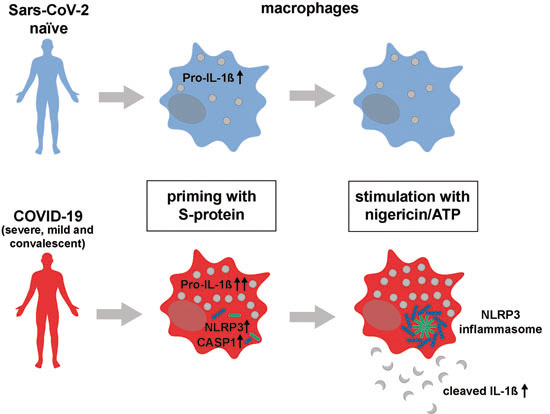
The SARS-CoV-2 S-protein, a surface exposed viral receptor binding protein and important as vaccine antigen, triggers NLRP3 inflammasome activation and cytokine secretion selectively in COVID-19 patient-derived macrophages.
“Here we show that the SARS-CoV-2 spike protein (S-protein) primes inflammasome formation and release of mature interleukin-1β (IL-1β) in macrophages derived from COVID-19 patients but not in macrophages from healthy SARS-CoV-2 naïve individuals.” (Theobald, et al, 2021) (2) *same quote as above, it is from the paper he is referring to – added here for clarity.
SARS-CoV-2 infection leads to reprogramming of human macrophages providing an intracellular landscape that allows for rapid inflammasome [formation]. The findings reveal that SARS-CoV-2 infection causes profound and long-lived reprogramming of macrophages resulting in augmented immunogenicity of the SARS-CoV-2 S-protein, a major vaccine antigen, and potent driver of adaptive and innate immune signaling.
The implications are that when the virus reemerges in the fall (and perhaps even as soon as this summer, with new variants circulating) the host will have a devastating NLRP3 inflammasome activation, resulting, I believe, in the hospitalization and death of millions of individuals throughout the world. I urgently implore that the sensitization of the world population to the S-Protein be stopped immediately.” *I agree – thanks.
- https://pubmed.ncbi.nlm.nih.gov/29900602/ (1)
- https://www.embopress.org/doi/full/10.15252/emmm.202114150 (2) (Theobald, et al, 2021)
- Twitter Thread: https://twitter.com/Parsifaler/status/1408248024602664965?s=20
The second part is about the sensitization that occurs when first exposed to the spike protein – in some people, particularly those deficient in vitamin D are at greater risk and people who already are prone to allergies and autoimmune conditions. It is likely that not every single person will have a problem. The majority of people did recover from having a Covid infection, although the LongCovid group is also fairly large. Thirty percent or more possibly, may have had lingering symptoms after , but specific data is only just starting to be collected by medical groups, rather than the preliminary research that is based on patient groups doing self surveys. LongCovid is real, Chronic Fatigue Syndrome, Gulf War Syndrome, fibromyalgia – all real people with real symptoms – not faked for attention or to get out of work.
Retinoid Toxicity also causes mast cell overactivity and allergy like and other symptoms.
I was one of those people with chronic fatigue syndrome and fibromyalgia like symptoms during the early days when it was disbelieved. The symptoms started after a case of mononucleosis during high school, and may be due to the infection having caused a change in my liver that causes vitamin A and beta-carotene to be converted into retinoic acid – which then would cause allergy like symptoms in addition to skin rashes and other odd symptoms. See my document which includes several blogposts and a symptom survey: Retinoid Toxicity.
In normal health vitamin A is protective and needed by the immune system, in this theory of retinoid toxicity a challenge to the immune system may leave it in the over activate vitamin A due to an infection stage, and never stopping…. chronic degenerative disease is the long term outlook. I stopped eating many carrots – me a dietitian who loves carrots. Life is odd. Health is complex and seems easy when it works, and kind of impossible when it doesn’t – but keep trying. Retinoid toxicity may be occurring in some LongCovid patients and adding to the complicated question of what’s wrong? Cannabinoid deficiency seems involved in the painful fingers and toes, see: Cannabinoids & blood vessels – and LongCovid. THC may help while CBD might worsen the membrane break down. Increased gentle movement may help by increasing oxygen flow to the tissue. The medication propanalol may help stabilize vascular membranes that have damage with cannabinoid imbalance. (13)
Genetics can leave some people more at risk because they can’t make cannabinoids, or metabolize glycine fully (like me, BHMT double gene allele), or remethylate folate and vitamin B12. Standard supplements would just make a deficiency worse and the person needs the bioactive forms instead, or just good dietary sources. There are many reasons someone might be more at risk for a health problem or infection compared to average – and they may have several odd issues, not just one. I have 11 gene alleles affecting metabolic pathways, 4 of them double, and working through my own symptoms to finally reach better health has been a long and meandering route.
LongCovid and spike protein injection recipients may also be in for a long and meandering route to learn what their own individual quirks are – the advantage in doing so is then you can feel astonishingly better, as the underlying issues are discovered and improved – and maintained. My own health got quite worse again when I started feeling well enough to just try a little taste or serving of a problem food – they were problems for a reason, and an autoimmune sensitivity will remain a risk for the rest of life, avoiding the problem food can help symptoms subside as the active antibodies fade away within about six months. LongCovid seems to involve some autoimmune antibody problems in G-protein coupled receptors – a type that includes the cannabinoid receptors and the niacin receptor, and many other important types with body wide impact on health.
Good health and chronically inflamed are not even a night/day comparison. The flu goes away – chronic inflammation is like having the flu every day, or randomly when you are really busy anyway and need to get stuff done, not rest with the flu like symptoms of your imaginary illness that no one believes in anyway — NO – rest. Your body will get worse because of that busy stress.
Myokines from intense exercise would worsen inflammatory risks, likely including the risk of inflammasome creation – polyphenols are protective.
Our muscles make a type of cytokine too, and more during extreme exercise. “Skeletal muscle is a major source of […] release of IL-6 from muscle can mediate metabolic processes. IL-6 is, therefore, the first identified “myokine” released from muscle that can now be termed an endocrine organ.” (9)
- Dr. Samuel Yanuck also discussed myokines in his cogenceimmunology.com video course, Episode M5/V4. (Registration required.)
Top athletic types have seemed more at risk for LongCovid than average. Polyphenols in the diet helps the body with post exercise recovery and reduces IL-6 and a blueberry supplement helped stop inflammasome production. (12) The real magic is in our foods.
Vitamin C and E also were found beneficial for reducing post exercise recovery from the cytokine increase (IL-6, which is one of the ones commonly elevated in severe COVID-19): “Role of vitamin C and E supplementation on IL-6 in response to training … the higher the fitness level, the lower the increase in exercise-induced plasma IL-6.” (10) Dopamine excess may also increase inflammatory IL-6, (11) – so overexcitement, over use of the internet perhaps may be too much EMF, too much blue light in the evening hours, and too much dopamine. Is health complicated – yes. Is an “illness” likely to have only one cause? No. If an unhealthy person gets sick, then to get healthy again, they may need to get healthy in the first place, and that is far more complex than “Eat right and exercise“.
Vitamin C would also help in the fatigue situation of anemia of chronic inflammation which can be unusually severe in COVID-19 patients. Typical ferritin levels are , I have seen a lab report for a LongCovid person whose ferritin level was over 10,000. Another Thread of Walter M Chestnut’s added clarity as to why that might happen.
9) Hepcidin similarity; Spike protein may enter cells at ferroportin and increase iron loss from cells. *Excerpt from S-protein Risks & Aids.
- Spike protein may enter cells by mimicking hepcidin and ferroportin – which may also lead to excessive free iron or ferritin levels. *see next section for other ways membrane breakdown may be occurring due to inflammation itself.
- Inflammatory membrane breakdown leads to increased risk of blood clots, stroke and heart attack because of changes in iron storage also, (49), called anemia of chronic infection or inflammation, but it seems more excessively than typical in COVID patients. See Thread by Walter M Chestnut, @parsifaler, (50, links, 49, 51, 52, 53) regarding the possibility that the spike protein increases this effect by mimicking a protein called hepcidin that is involved in the natural process. (53) The body does it to protect iron from pathogens, who also need it for growth. The spike protein may be doing it to enter cells at a receptor that hepcidin can interact with – ferroportin.
- Iron chelators can help with the excessive ferritin and free iron associated with chronic inflammation or infection, or spike protein mimicking hepcidin – whatever the reason there is too much free iron – the solution is still going to include iron chelators. Giving blood is also used when iron overload is a problem in a person who is healthy, but for someone with symptoms of anemia, more mature blood cells are needed, not fewer. Immature blood cells that can’t carry oxygen tend to be associated with anemia of chronic infection.
- Iron chelators: Artemisinin, quercetin, EGCG, resveratrol, turmeric and lactoferrin- an isolate from milk that has not been found to be an allergy concern for people with milk protein sensitivity.
- Vitamin C can help. See: Anemia of Inflammation, IL-6, Hepcidin, Iron and Vitamin C.
- See: Iron and Anemia of Chronic Infection – for a brief explanation.
So Listen! medical community – patients have odd symptoms, but that doesn’t mean they aren’t suffering real problems.
My own premise as a clinician – start by listening to the person – what are their concerns, what is their story – granted, it doesn’t always make sense – but that doesn’t mean ignore them or think they are lying. Just listen, ask more questions based on a differential diagnostic type structure (mentally), try to figure out what they are talking about, it may take a little time. It may take trying a few strategies and checking back to see if that did or did not make an improvement for them – also useful information for a differential diagnosis. Dietitians do not diagnose, except that we are trained in the same process, and regarding digestive upset and other diet related symptoms we may make specific recommendations to the patient based on what the problem seems like, or may write the person’s health care professional with the nutrition assessment and recommendations.
Ordering a ‘Dietary consult’ – means asking the nutrition specialist to review the patient’s chart and provide a summary of findings based on lab tests, medical and social history, weight changes, interview with the patient or caregiver, and any other information from the chart. Recommendations may be made for changing a patient’s supplements, medications, (negative interactions can be a risk factor), adding or removing food supplements (high protein drinks are used or other enriched snack foods to promote nutrient intake when there are bedsores or other causes for increased calorie needs), and doing more frequent weight checks for patients who seem to be doing poorly.
We can listen to veterans about their struggle with Gulf War Syndrome symptoms: Gulf War Syndrome | The Mysterious Illness Suffered by Gulf War Veterans, (Youtube) Veterans have gained some recognition and help from the US government: 5 Questions about Presumptions [qualifying] for Gulf War [diagnosis] and Undiagnosed Illnesses: (Youtube)
Magnesium is needed to help reduce inflammation and an over-active inflammatory response. Vitamin C, niacin, thiamine, and other nutrients also help.
We need magnesium to prevent inflammation and protect the mitochondria’s use of the Citric Acid Cycle for energy production. When mitochondria have to switch to fermentation of glucose or glutamate for energy – it is a early warning sign for cancerous changes in the cell or prion damage – protein tangles seen in Alzheimer’s dementia and other neurodegenerative conditions.
Magnesium is needed to reduce the cytokine response that leads to NLRP3 inflammasome production within a cell. To give you a bigger world visual – think of the inflammasome as SWAT team high tech van with all of its armor and weapons – dangerous and for defense/offense – a killing machine for dangerous pathogens. Sounds great – we want our body to be defended right? Yes, right – if there is a pathogen in the cell. But what if it is an allergic reaction and there is no pathogen to kill? The cell dies anyway, the Inflammasome would need to kill an infected cell.
“[Magnesium Sulfate], MgSO4 inhibits NLRP3 inflammasome, IL-1β upregulation, and pyroptosis. The mechanism is consistent with decreased intracellular calcium levels.” (7)
Why do I take Epsom salt baths or footsoaks? because I don’t want my cells to be killed by NLRP3 Inflammasomes due to a chronic inflammatory condition. Magnesium helps block excess calcium entry from entering cells – which is an increased risk when there is excessive free glutamates and aspartic acid artificial sweeteners in the diet – or a chronic inflammatory condition.
Tight Junctions and passive magnesium absorption.
Tight Junctions and Magnesium channels within the intestinal lining are two ways magnesium may be absorbed from our diet. TRPM6 and 7 ion channels allow magnesium entry – however genetically some people may have dysfunctional or fewer of the TRPM channels and a topical source may be needed, allowing hydrated magnesium ions to diffuse through the Tight Junctions between cells. Excess can be absorbed through the passive route as there are no controls on it other than the concentration of ions. Passive diffusion is the process by which ions from a more concentrated solution will gradually shift over to the less concentrated solution when there is some opening for the ions to pass through – such as the thin crevice between cells.
Our extracellular matrix is a gelatin like fluid that surrounds our cells and coats membranes in a protective layer. Adequate glycine and other nutrients helps it be more protective rather than too thin or so thick that function is reduced. It helps prevent Tight Junctions from allowing too much or too large of particles from the intestines to enter our body. This helps prevent autoimmune antibodies from being created, or other allergic reactions to dietary proteins. See: Glycine – good for our extracellular matrix & for immune protection against viral infection.
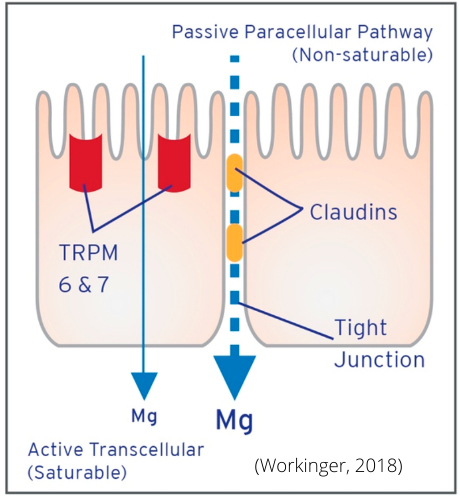
Personally I think the miracle of life deserves understanding and protection – not an expectation that it just happens or simply can be purchased with a prescription pad. The Epsom salt doesn’t soak my feet for me – I have to do that – and I am blessed that I can just go buy some magnesium sulfate salt crystals.
From April 7, 2020 post: Bitter taste receptors in the lungs & Hesperidin’s decongestant properties.
Anti-inflammatory Phytonutrients/nutrients from a previous post; promote p53 or inhibit NLRP3:
Other phytonutrients including quercetin which is found in citrus peel, also can help inhibit production or activity of the inflammatory NLRP3 inflammasome which has been found to be elevated during more severe COVID19 illness. Sulfarophane (broccoli, etc), resveratrol (grape skins, etc), EGCG (green tea, pomegranate peel), curcumin (turmeric/curry powder), gensenoside (ginseng), emodin (aloe vera gel), mangiferin (mango) and genipin (from a fruit used as a Traditional Chinese Medicinal) are also phytonutrients that may reduce activity or production of NLRP3 inflammasomes. (17*) **
Increasing activity of a protein called p53 seems to help inhibit the production or activity of the NLRP3 inflammasome. Phytonutrients and nutrients that may promote p53 activity also include zinc, artemisinin (wormwood herb), goldenseal (berberine, also found in a few other herbs), Black seed oil (Nigella sativa), ginger (6-gingerol), feverfew, chamomile, and cordyceps mushrooms. (18*)** Replication of human coronaviruses and the SARS-CoV-1,(2003 strain) virus has been found to be inhibited by p53 and have also been found to cause the production of an additional protein that leads to breakdown of the p53 protein which may help explain the dysfunction of immune function in more severe infections. (21*, 22*)**
- For more about p53 and how it may help against aging see: Intermittent fasting, magnesium, cancer prevention, and elephants – “Elephants never forget” – it may be because of their p53 gene.
Inactivating the NLRP3 inflammasome seems to have anti-inflammatory benefits (17*) that may help prevent age related changes. It is an area of research being pursued for pharmaceutical development. (11*)** Sleep masks/pitch blackness during sleep, with the alarm clock and light leaking in the window covered, could help your body inactivate the NLRP3 inflammasome on a nightly basis with no ongoing copay (by increased melatonin production, see: Sleep and health, for tips for improving sleep habits for better melatonin production). **( Excerpt from: Bitter Taste Receptors… see for references 11*, 17*, 18*, 21*, 22*) *The excerpt was included in: Phytonutrients that may help against SARS-CoV-2 & jenniferdepew.com/Phytonutrients.
Black seed oil has been helping me with what seems like a chickenpox/shingles problem. I take a spoonful am and pm and use it topically on the spots. Within a day or two the stinging fluid filled bumps flattened out. I have gotten more since but with continued use of the black seed oil the pain and itching has not been a problem and only a couple are fluid filled. I had a severe case as a child so I remember, they can get finger-tip size and pop, scab over, and are very itchy, take a long time to heal and leave scars. Fun times. Black seed oil is better in my personal experience.
From a January 13, 2021 post, COVID19, summary of nutrients that might help prevent, treat, recover.:
Magnesium helps white blood cells kill infected cells & protects the brain from inflammation risks.
Epsom salt, magnesium sulfate, can be absorbed through skin pores (any studies about magnesium chloride not being that well absorbed have little to nothing to do with the absorbability of a hydrated magnesium sulfate molecule). The sulfate is bioactive and patients would also be helped by the magnesium. Magnesium is nature’s calcium channel blocker and so would help protect against cell damage from excess calcium being allowed into cells. Magnesium is also essential for white blood cells to be able to perform apoptosis, killing infected cells and removing them safely. Poor intestinal absorption is not uncommon and topical magnesium or intravenous may help, especially if muscle cramps are a symptom. Lab tests showing hypokalemia can also suggest low magnesium is a problem. (Mechanism of Hypokalemia in Magnesium Deficiency – JASN)
Magnesium also is needed as a calcium channel blocker to protect against stimulation by EMF energy which can also open the calcium channels. (Klinghardt pdf) See post: EMFs and Intracellular Calcium – Magnesium is nature’s calcium channel blocker. For the long hours of sleep in particular it can help reduce inflammation risk to remove or turn off WiFi devices from the sleeping area or nearby rooms. Various products are available that block EMF such as cell phone cases and modem covers which help reduce excess energy release, (educateemf.com/WiFi Router Guards) turning it off while sleeping would be ideal if possible.
The SARS-CoV-2 virus can add viroporins to the infected cell’s membrane which allows calcium to enter. The excess calcium within a cell causes the creation of NLRP-3 inflammasomes which produce cytokines that increase inflammatory changes in other cells, (“pro-inflammatory IL-1β cytokines“). (Klinghardt/3/19/2020,pdf) The viroporin channels vary somewhat for different virus and one type is blocked/inhibited by the anti-viral medications “amantadine and rimantadine.” (viroporins) Adequate magnesium would help protect other cells if/when an infected cell burst open to release the newly replicated virus from the infected cell. Phytonutrients that may help inhibit NLRP-3 inflammasome assembly are listed towards the end of this post: Phytonutrients that may help against SARS-CoV-2.
Avoiding EMF exposure would help by not adding more activation of our own calcium channels and promoting even more entry of excess calcium into all of our cells (our whole body being exposed to the EMF somewhat equally depending on the source, or more to our ear/hand if holding a smartphone). (Klinghardt/3/19/2020,pdf)
Blackout curtains or an eye mask for sleeping or napping can help with eye sensitivity and may help the body make more melatonin which has protective effects against viral infection and inflammasome production. Vitamin C also reduces inflammasome production and can reduce over negative effects on blood vessels. (Klinghardt/3/19/2020,pdf)
Scope of Practice
In health care some practice general services for any type of patient and refers to specialists as those needs become more complex. Others specialize in one fairly narrow area of practice. My clinical experience, my 15 years of experience listening to people and helping them individually, was spent focused on prenatal, postpartum, lactation, and early childhood health. That is narrow compared to all disease, all health, all ages, which is the general training I received in college and my supervised apprenticeship. I have also worked in residential facilities and home based care for elderly and disabled patients, however I was checking my textbooks and references and feeling like that college student again.
The value though in having a clinical background in prenatal and early childhood health is that my scope of practice was focused on growth – how to grow healthy cells with just what you can put in a grocery bag – my clients were within or near the poverty line economically and supplements and ‘fancy’ foods were not available or of interest to them for the most part.
No matter what your age, illness, or genetic differences – you, dear reader, and everyone else – are not going to be able to grow healthy cells or repair them or remove toxins safely – without adequate nutrients and whole foods that have many other helpful phytonutrients and non-digestible fiber that supports a healthy microbiome. The severe illness of COVID-19 seems related to having an unhealthy microbiome and a resulting lack of butyrate: Resistant Starch/Butyrate.
Butyrate is a short chain fatty acid that can activate the niacin receptor which can help the body remove inflammation as heat – or generate heat from glucose during cold weather. High dose niacin supplements and butyrate supplements could be protective in addition to improving your own diet, for the sake of your healthy microbiome species at least. Low fiber, low zinc diets lead to the beneficial species dying off and without them to keep pathogenic types in check, less helpful or harmful species are more likely to grow. Harmful species may cause inflammatory cytokines, and that may lead to production of NLRP3 Inflammasomes -and potentially leading to the death of some of your cells. And you wouldn’t have needed any novel SARS-CoV-2 virus or spike protein to be involved. Leaky Tight Junctions allow allergenic or autoimmune inducing proteins to enter the body – adequate fiber in the diet also helps the cells maintain extracellular fluid in a stable, not too liquid or too thick, gelatinous texture – our jelly lining.
- See this post for more about the protective effects of the extracellular matrix: Glycine – good for our extracellular matrix & for immune protection against viral infection.
- Also: Microbiome.
Disclaimer: Opinions are my own and the information is provided for educational purposes within the guidelines of fair use. While I am a Registered Dietitian this information is not intended to provide individual health guidance. Please see a health professional for individual health care purposes.
Reference List
- (Xiao, Xu, Su, 2018) Xiao Y, Xu W, Su W. NLRP3 inflammasome: A likely target for the treatment of allergic diseases. Clin Exp Allergy. 2018 Sep;48(9):1080-1091. doi: 10.1111/cea.13190. Epub 2018 Jul 3. PMID: 29900602. https://pubmed.ncbi.nlm.nih.gov/29900602/
- (Theobald, et al, 2021) Theobald SJ, Alexander Simonis A, Theodoros Georgomanolis T, et al., Long-lived macrophage reprogramming drives spike protein-mediated inflammasome activation in COVID-19, EMBO Mol Med (2021) e14150. https://doi.org/10.15252/emmm.202114150 https://www.embopress.org/doi/full/10.15252/emmm.202114150
- Swanson, K.V., Deng, M. & Ting, J.PY. The NLRP3 inflammasome: molecular activation and regulation to therapeutics. Nat Rev Immunol 19, 477–489 (2019). https://doi.org/10.1038/s41577-019-0165-0 https://www.nature.com/articles/s41577-019-0165-0
- (He, et al, 2015) He, Wt., Wan, H., Hu, L. et al. Gasdermin D is an executor of pyroptosis and required for interleukin-1β secretion. Cell Res 25, 1285–1298 (2015). https://doi.org/10.1038/cr.2015.139 https://www.nature.com/articles/cr2015139
- (Iorga and Dara, 2019) Andrea Iorga, Lily Dara, Chapter Two – Cell death in drug-induced liver injury, Editor(s): Anup Ramachandran, Hartmut Jaeschke, Advances in Pharmacology, Academic Press, Volume 85, 2019, Pages 31-74, ISSN 1054-3589, ISBN 9780128167595, https://doi.org/10.1016/bs.apha.2019.01.006. https://www.sciencedirect.com/science/article/abs/pii/S1054358919300067 Excerpt viewable here: https://www.sciencedirect.com/topics/neuroscience/pyroptosis
- Workinger JL, Doyle RP, Bortz J. Challenges in the Diagnosis of Magnesium Status, Nutrients 2018, 10(9), 1202; https://doi.org/10.3390/nu10091202 https://www.mdpi.com/2072-6643/10/9/1202/htm
- Chang YY, Kao MC, Lin JA, Chen TY, Cheng CF, Wong CS, Tzeng IS, Huang CJ. Effects of MgSO4 on inhibiting Nod-like receptor protein 3 inflammasome involve decreasing intracellular calcium. J Surg Res. 2018 Jan;221:257-265. doi: 10.1016/j.jss.2017.09.005. Epub 2017 Sep 30. https://pubmed.ncbi.nlm.nih.gov/29229137/
- Kelley N, Jeltema D, Duan Y, He Y. The NLRP3 Inflammasome: An Overview of Mechanisms of Activation and Regulation. Int J Mol Sci. 2019;20(13):3328. Published 2019 Jul 6. doi:10.3390/ijms20133328 https://www.ncbi.nlm.nih.gov/pmc/articles/PMC6651423/
- Febbraio MA, Pedersen BK. Contraction-induced myokine production and release: is skeletal muscle an endocrine organ? Exerc Sport Sci Rev. 2005 Jul;33(3):114-9. doi: 10.1097/00003677-200507000-00003. PMID: 16006818. https://pubmed.ncbi.nlm.nih.gov/16006818/
- Christina Yfanti, Christian P. Fischer, Søren Nielsen, et al., Role of vitamin C and E supplementation on IL-6 in response to training. J Applied Physiology 2012 112:6, 990-1000 https://journals.physiology.org/doi/full/10.1152/japplphysiol.01027.2010
- Kazuhisa Nakano, Kunihiro Yamaoka, Kentaro Hanami, et al., Dopamine Induces IL-6–Dependent IL-17 Production via D1-Like Receptor on CD4 Naive T Cells and D1-Like Receptor Antagonist SCH-23390 Inhibits Cartilage Destruction in a Human Rheumatoid Arthritis/SCID Mouse Chimera Model. J Immunol March 15, 2011, 186 (6) 3745-3752; DOI: https://doi.org/10.4049/jimmunol.1002475 https://www.jimmunol.org/content/186/6/3745
- Professor David Nieman, A Multi-Omics Approach to Interpreting the Influence of Polyphenols in Countering Exercise-Induced Physiological Stress, video presentation, International Electronic Conference on Nutrients – Nutritional and Microbiota Effects on Chronic Disease SciForum.net https://youtu.be/aFnalWJ2Fgk
- Anderson R, Ramafi G, Theron AJ. Membrane stabilizing, anti-oxidative interactions of propranolol and dexpropranolol with neutrophils. Biochem Pharmacol. 1996 Jul 26;52(2):341-9. doi: 10.1016/0006-2952(96)00212-2. PMID: 8694859. https://pubmed.ncbi.nlm.nih.gov/8694859/
- (Wong and Saier, 2021) Wong, N.A. and Saier, Jr., M. H., The SARS-Coronavirus Infection Cycle: A Survey of Viral Membrane Proteins, Their Functional Interactions and Pathogenesis. Int. J. Mol. Sci. 2021, 22, 1308. https://doi.org/10.3390/ijms22031308 https://www.dropbox.com/s/kfnfxn99h5k6hxq/ijms-22-01308-v3%20%281%29.pdf?dl=0 *Quote from page 20

